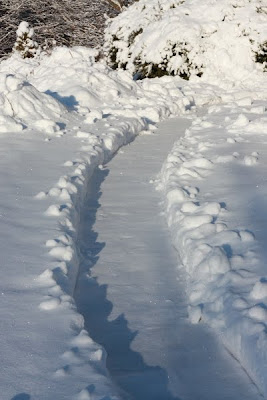
As of mid-February the milk-jug army is up to 18 jugs. They contain seeds of:
rosa rugosa
mixed columbine
New England aster?
staghorn sumac
?? Mystery seeds!
marsh violets (collected from a sunny, moist location)
violets (from the ones in Gabe's Garden)
catalpa
blue toadflax
black-eyed Susan
obedient plant
prairie blazing star
scarlet sage
false blue indigo AND anise hyssop
blanket flower
salsify
leopard's balm
lemon horsemint
I have to admit, I'm starting quite a lot of these not because I want the plant, but because I want to be a better gardener. Many of the seeds are two years old anyway, and I really have waited absurdly late to get these going, so I doubt I'll have great results. But then again, last year I didn't think I would have great results, either, and I ended up with thousands of seedlings.
This technique is called winter sowing. It's a way of starting seeds the way nature intended: exposed to sun and rain, and frozen and thawed repeatedly. But protected in the containers, the seeds and seedlings run less of a risk of drying out and perishing at a delicate stage, or being eaten by birds, etc. It's a particularly effective technique for native plants, many of which need a full winter's exposure in order to germinate. Some seeds require two full winters (such as Indian cucumber root), but I lack the patience for those.

I use plastic milk jugs, which I have cut around the middle and punched drain holes in the bottom. Last year, I used regular garden dirt, which worked quite well, except that it also contained weed seeds. That was messy, so this year, I tried straight seed-starting mix in some, and potting soil topped with seed-starting mix in others. If I were properly scientific, I would have done comparisons, starting the same type of seed in two jugs with different mixtures, but I had a toddler to chase, so that didn't happen.
Anyway, I just fill the jugs with the soil, give the dirt a good soak, and then sprinkle the seeds on top like poppy seeds on a bagel. Then the top gets taped back on, and the jugs are neglected until I need seedlings. Which might be in September.





















